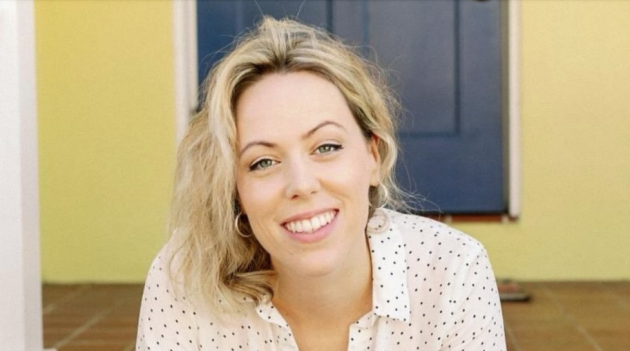In an editorial, Jersey City council-at-large candidate Meredith Burns gives her take on how the city’s arts and culture sector can thrive going forward.

Jersey City’s artists and cultural organizations don’t just create beauty and meaning, they drive our local economy and bring communities together.
In 2022, the city’s nonprofit arts and culture sector generated $46 million in total economic activity, supported over 530 jobs, provided $28.2 million in personal income, and contributed $7.1 million in local and state tax revenue. T
he data is clear: when we invest in culture, we invest in the civic and economic health of our city (Jersey City Official Site; Hudson County View).
We can’t take that vitality for granted. Artists and cultural organizations are facing growing pressures: federal budget cuts, rising living costs, limited access to affordable workspaces, and a shrinking number of reliable venues for performance, rehearsal, and exhibition.
For too many creatives, it’s becoming harder and harder to live, work, and thrive in Jersey City. That’s why we’re taking action.
As part of Team McGreevey, I’ve been working closely with local artists, educators, cultural workers, and advocates to shape a Jersey City Arts Blueprint, a community-informed plan rooted in lived experience and local insight.
Through a series of public roundtables, we’ve been identifying the policies and priorities needed to sustain and grow Jersey City’s creative economy. The plan rests on five core pillars:
1. Affordability.
If we want artists, educators, healthcare workers, and other essential professionals to continue calling Jersey City home, we must address the cost of living.
The Blueprint calls for expanded affordable live/work housing for artists and cultural workers, tax stabilization to reduce financial pressure on renters and homeowners, and stronger incentives for developers to include cultural spaces like studios, rehearsal rooms, and galleries in new projects.
When artists can afford to stay, they invest deeply in their neighborhoods through placemaking, education, and civic engagement.
2. Infrastructure and Leadership.
Jersey City needs more accessible, affordable spaces where creativity can flourish, and a strong, empowered arts council to help lead the way.
The Blueprint calls for continued investment in the Jersey City Arts Council as a transparent, accountable, and well-resourced body that reflects the full diversity and needs of our city’s artists, educators, and cultural organizations.
We must increase performance, rehearsal, and exhibition spaces, especially in historically underserved neighborhoods.
Partnerships with groups like ChaShaMa (a nonprofit that transforms vacant real estate into studio, presentation, and classroom space for artists and small businesses) can turn vacant properties into vibrant cultural hubs, revitalizing retail corridors.
A new citywide survey of available spaces will ensure that every Ward, from Greenville to the Heights, is represented on Jersey City’s cultural map.
3. Strengthening the Arts & Culture Trust Fund.
Since its launch in 2021, the Jersey City Arts & Culture Trust Fund has provided more than $2 million in grants to nearly 200 artists and organizations (Hudson County View; Jersey City Press Release, 2024).
That’s real support for rent, salaries, and program costs. The Fund needs to grow in order to meet growing demand, and it needs to do so without burdening residents.
By cultivating sustainable partnerships with philanthropic and corporate supporters, we can expand the Fund and provide long-term stability for Jersey City’s creative economy.
4. Visibility and Access.
Every week, Jersey City offers remarkable exhibitions, performances, festivals, and public art, but too often, they go unseen. We need a central platform that makes it easy for residents and visitors to connect with our city’s cultural life.
That’s why the Blueprint proposes a user-friendly, multilingual, City-supported website and app to list events, artist opportunities, and public programs.
Designed with accessibility and inclusion in mind, this hub would also feature low-cost advertising space for local artists and small businesses, and could eventually become financially self-sustaining.
5. Equity in Arts Education and Access.
Everyone, regardless of age, income, language, or ability, deserves access to arts and culture. That means deepening partnerships with local schools, after-school programs, and senior centers.
It also means improving transportation, signage, and ADA access so that cultural resources are truly reachable.
One bold idea is a partnership with the Jersey City Free Public Library to establish a dedicated arts education branch—modeled after The Hive in Spokane, Washington—that would offer workshops, exhibitions, and creative resources for all ages under one roof.
This isn’t just an arts plan, it’s a vision for civic belonging and economic sustainability. The Blueprint also calls for regular roundtables that bring together artists, cultural leaders, educators, and small business owners to foster collaboration across sectors.
Artists aren’t a niche interest, they’re essential stakeholders in the future of our city. Their insights will improve planning, development, and education while strengthening our collective sense of place.
Jersey City’s creative community is vibrant, resilient, and full of potential, but it needs coordinated, long-term investment to truly thrive.
With your help, we can build a city where creativity is celebrated as a core public good, and where artists can live, create, and contribute for generations to come.
I invite you to be part of the conversation. Join us for the next Arts Roundtable on Tuesday, August 5 from 7:00–8:00 p.m. at AndCo North (220 9th Street, 2nd Floor). Let’s imagine and build a future for Jersey City where the arts are not only visible, but vital.